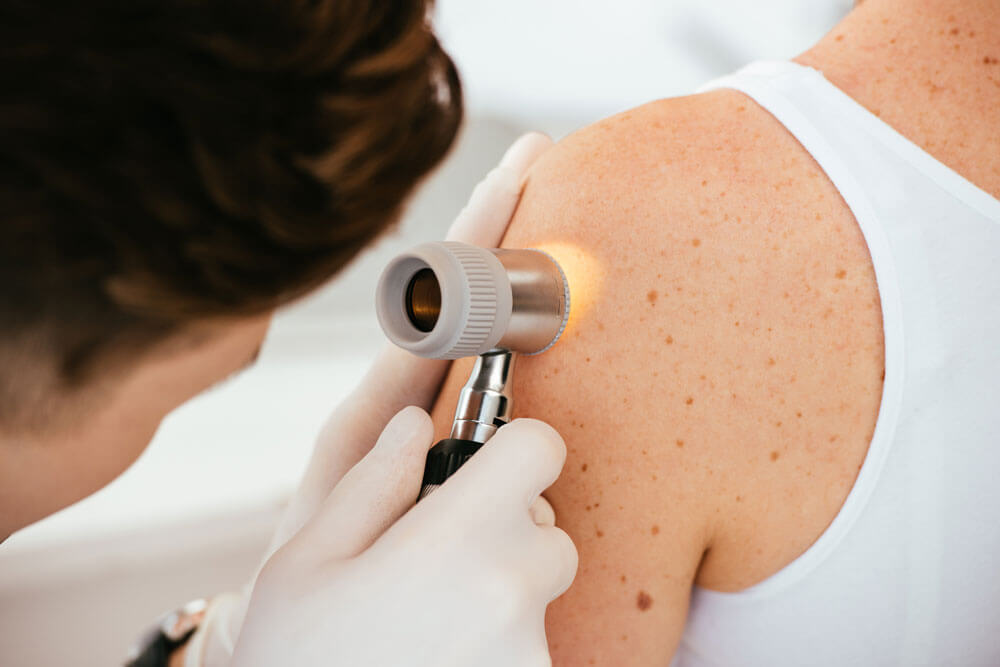The Duty of a Skin Doctor in Detecting and Treating Different Skin Problems
The role of a skin doctor extends far beyond basic skin treatment; it includes the detailed processes of detecting and treating a vast range of skin disorders. The complexity of skin disorders frequently needs a complex method that consists of not just medical treatments however also client education and learning and preventative methods.
Relevance of Skin-related Competence
The knowledge of dermatologists is critical in the diagnosis and management of skin problems, as they have specialized knowledge that expands past general clinical training. This advanced understanding is essential for properly identifying a large range of skin problems, which typically provide with overlapping signs and symptoms that can puzzle non-specialist experts. Skin specialists are educated to set apart in between numerous skin disorders, guaranteeing proper treatment plans are executed quickly.
In addition, the field of dermatology includes a distinct combination of medical skills and cutting-edge technology. Dermatologists use advanced analysis devices, such as dermatoscopes and skin biopsies, to evaluate skin lesions and identify their nature. This technical proficiency enables early discovery of potentially serious conditions, consisting of skin cancers cells, which can dramatically improve patient results.

Typical Skin Disorders Detected
Many skin problems can offer with varying levels of seriousness and intricacy, making skin-related proficiency vital for accurate diagnosis and monitoring. Amongst one of the most prevalent problems are acne vulgaris, psoriasis, dermatitis, and dermatitis.
Acne vulgaris, defined by the existence of papules, pustules, and comedones, mostly impacts teenagers however can persist right into their adult years. Dermatitis, or atopic dermatitis, is a chronic inflammatory problem that brings about completely dry, itchy, and swollen skin. Psoriasis is an autoimmune condition that materializes as red, scaly plaques, mainly on extensor surface areas, and can significantly affect the top quality of life.
Other usual disorders include rosacea, which presents with face flushing and visible blood vessels, and seborrheic dermatitis, typically resulting in dandruff and oily spots on the scalp. Fungal infections, such as tinea pedis (professional athlete's foot) and tinea corporis (ringworm), are likewise often experienced.
These varied problems call for a detailed understanding of pathophysiology, in addition to understanding of restorative options, to lead reliable therapy techniques - Dermatologist Raleigh NC. With accurate medical diagnosis, skin specialists can offer tailored management plans that attend to both the symptoms and underlying sources of these common skin problems
Diagnostic Strategies Made Use Of
How do skin doctors precisely identify various skin disorders? Skin specialists use a combination of medical assessments, diagnostic tools, and specialized strategies to guarantee precise identification of skin disease. The initial step typically entails a complete case history and health examination. Throughout this process, skin doctors assess the individual's signs and symptoms, onset, duration, and any kind of possible triggers.
One of the primary diagnostic methods is dermoscopy, which uses a portable tool to amplify skin lesions, enabling detailed exam of frameworks not noticeable to the naked eye. Furthermore, skin biopsies are frequently done, wherein a little sample of skin is eliminated for histopathological evaluation. This strategy is important for detecting problems such as cancer malignancy and other skin cancers cells.
Spot testing is another important technique used to recognize call dermatitis by revealing percentages of prospective irritants to the skin. Moreover, laboratory examinations, consisting of blood examinations and cultures, may be conducted to dismiss systemic problems or infections. Jointly, these diagnostic techniques allow skin doctors to create an extensive understanding of skin disorders, bring about exact diagnoses and educated person monitoring.

Treatment Options Readily Available
A wide variety of therapy alternatives is offered for handling skin problems, customized to the particular condition and private person demands. Dermatologists employ both systemic and topical therapies, depending on the seriousness and kind of skin disorder.
For much more serious problems, systemic therapies may be required. These consist of oral medicines such as prescription antibiotics for bacterial infections and immunosuppressants for autoimmune conditions. Biologics, a more recent course of drugs, have shown efficiency in treating persistent inflammatory problems like psoriasis and atopic dermatitis.
Along with pharmacologic treatments, dermatologists may suggest step-by-step choices such as laser photo-therapy, treatment, or chemical peels (Dermatologist Raleigh NC). These treatments can address coloring concerns, acne scarring, and various other skin irregularities successfully
Additionally, way of living alterations, including correct skin care regimens and sunlight defense, play a critical role in the overall monitoring of skin disorders. By incorporating read this these treatment methods, dermatologists intend to enhance person outcomes and enhance lifestyle for those impacted by skin disease.
Patient Education And Learning and Support
Empowerment through expertise is vital in the administration of skin conditions, as patient education and learning and assistance significantly influence therapy end results. Skin doctors play a critical duty in providing clients with thorough info concerning their problems, therapy options, and self-care approaches. Reliable interaction cultivates a joint environment where patients can actively take part in their own treatment.

Assistance prolongs past education; it incorporates emotional peace of mind and recurring motivation. Dermatologists must produce a risk-free space for people to reveal their worries and ask concerns. Resources such as educational handouts, websites, and support groups can better equip people, allowing them to connect with others facing comparable obstacles.
Ultimately, an educated client is most likely to involve in their treatment journey, causing far better adherence, satisfaction, and improved health and wellness outcomes. The dermatologist's duty in patient education and learning and assistance is basic to maximizing the management of skin problems.
Conclusion
In conclusion, dermatologists play an important duty in discover this the efficient medical diagnosis and treatment of a broad array of skin disorders. The payments of skin specialists significantly enhance the quality of life for those impacted by skin conditions.
The role of a skin specialist prolongs much past standard skin treatment; it encompasses the detailed processes of diagnosing and dealing with a vast selection of skin conditions. Skin specialists use advanced diagnostic tools, such as dermatoscopes and skin biopsies, to analyze skin lesions and establish their nature. Ultimately, the specialized training and experience of dermatologists are essential in supplying thorough treatment for patients with skin disorders.
In addition, skin biopsies are often executed, where a small example of skin is eliminated for histopathological analysis. Collectively, these diagnostic strategies permit dermatologists to create an extensive understanding of skin problems, leading to accurate medical diagnoses and informed individual administration.